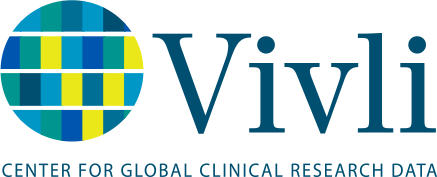Lead Investigator: Zhaojin Chen, National University of Singapore
Title of Proposal Research: Analyzing the Effectiveness of a New Cancer Treatment Using Historical Data in a Phase II Clinical Trial
Vivli Data Request: 10757
Funding Source: None
Potential Conflicts of Interest: None
Summary of the Proposed Research:
Cancer is a serious disease that happens when cells in the body grow out of control. It is a leading cause of death, affecting millions of people worldwide every year. Finding better treatments for cancer is very important to help patients live longer and healthier lives. Clinical trials in oncology are scientific experiments that study a drug or treatment regimen in human beings and are traditionally conducted in four successive phases. Phase I trials examine safety, tolerance and possible dosages of a drug. Phase II trials check if the treatment shows early signs of being effective while continuing to monitor its safety. Phase III trials are large studies that aim to prove whether the treatment really works. Finally, Phase IV trials occur after the treatment has been approved and focus on long-term safety and effectiveness in a broader group of patients.
In the past, researchers have used single-arm Phase II clinical trials to test new cancer treatments for solid tumors. These trials check how well a new treatment works by looking at how many patients have a decrease in tumor size, known as the objective response rate. This rate is then compared with some benchmarks to make go or not-go decision for Phase III trials. As these benchmarks are chosen based on prior knowledge, they are often not accurate. This can lead to incorrect conclusions in Phase II trials, resulting in many ineffective treatments being advanced to larger Phase III trials, which can waste time and resources.
Additionally, some new cancer treatments do not shrink tumors much but can still help patients live longer. This shows that we need better ways to judge how effective these treatments are. This research aims to improve the design and analysis of Phase II trials by using historical control data. This means we will look at past information from patients who did not receive the new treatment to create a better standard for comparison.
To do this, this research will analyze data from two clinical trials. The treatment arm will be the single-arm of the PLASMA Phase II trials, while the control arm (comparison group) will be the platinum-pemetrexed arm of the AURA 3 Phase III trial conducted at an earlier time. The AURA 3 trial is chosen because it has very similar patient selection criteria as those of the PLASMA trial, making it a good match for comparison.
This research is important because it will help us better understand how effective new cancer treatments are. By improving the way we evaluate these treatments, we hope to enhance patient care and ensure that only the best therapies move forward to larger trials. This could lead to better treatment options for cancer patients and improve their chances of recovery.
Requested Studies:
A Phase III, Open Label, Randomized Study of AZD9291 Versus Platinum-Based Doublet Chemotherapy for Patients With Locally Advanced or Metastatic Non-Small Cell Lung Cancer Whose Disease Has Progressed With Previous Epidermal Growth Factor Receptor Tyrosine Kinase Inhibitor Therapy and Whose Tumours Harbour a T790M Mutation Within the Epidermal Growth Factor Receptor Gene (AURA3).
Data Contributor: AstraZeneca
Study ID: NCT02151981
Sponsor ID: D5160C00003
Study title: A Phase II Study of Osimertinib in Patients with Advanced-Stage Non-Small Cell Lung Cancer following Prior Epidermal Growth Factor Receptor Tyrosine Kinase Inhibitor (EGFR TKI) Therapy with EGFR and T790M Mutations Detected in Plasma Circulating Tumour DNA (PLASMA Study) Scripts: Stata commands written by the research statistician for data analysis
Data Contributor: I WILL BRING MY OWN

